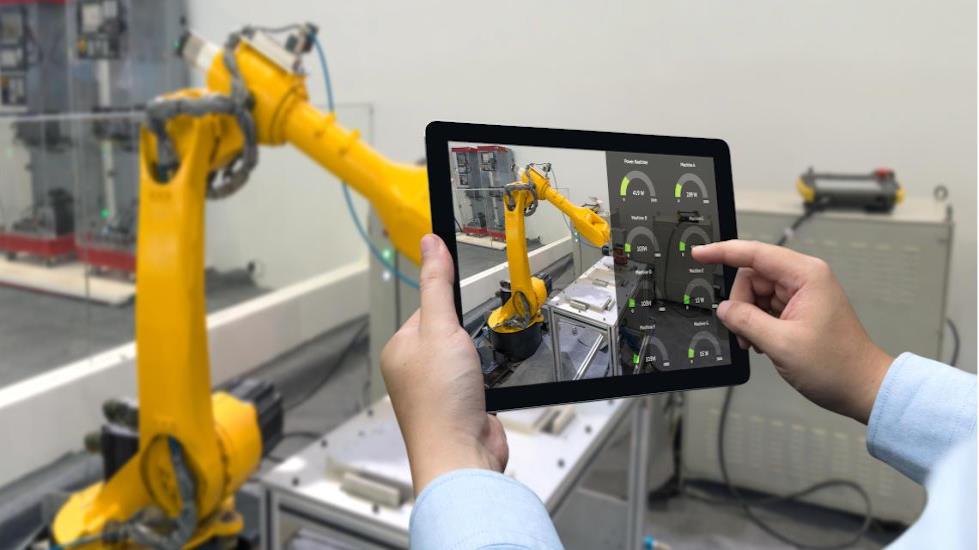
Until recently, factories relied on hardware-defined automation. The model worked but required heavy human interaction and ultimately slowed efficiency. It also lacked the insights of the fully connected automation we can access now.

Today, end-to-end automation uses software to pull data insights from the factory floor — and helps transform your business. And machine learning can help you create more productive end-to-end operations, meet customer needs, and free your team to focus on more strategic tasks.
Software-driven insights help the production floor
When it comes to manufacturing, we incorporate intelligence not just in the hardware, but in the software that makes the hardware work. Software insights in manufacturing are bridging the gap between the digital and the physical in a way that’s transformational.
— Mike Doiron, Vce President of Engineering Quality Excellence, Flex
It’s easy to see ongoing benefits from pairing software with hardware. Manufacturing software gets smarter while the hardware gets simpler. The result is ongoing, exponential benefit to our customers:
- More competitive advantage from less time between design and production
- Increased output due to reduced downtime, speeding production, and minimizing errors
- Meaningful contributions from refreshed and motivated employees
- Agile relocation based on the ease of testing in one region and then moving to another
The introduction of software in manufacturing is fueling industry 4.0. We are making smarter factories as we redesign the role of humans, hardware, and software in manufacturing.
— Hassan Aluraibi, Advanced Manufacturing Engineering Manager, Flex
Why a factory floor should look more like a data center
In general, data centers are trending towards having no keyboards or monitors. Why? Because data centers run on software with minimal need for human input.
Software automatically reacts to data insights collected from the factory floor. When it reacts, it is performing analysis, triggering action for preset responses, and automatically completing tasks based on received information. This intelligent system reduces the manual process that can lead to recurring mistakes, communication gaps, and lost productivity. Allowing software to drive the factory floor frees team members to provide significant effort in other areas.
Deep analytics with a wide global reach
Our software-enhanced manufacturing can help address your needs wherever you are in the world.
Here are five ways software lends flexibility:
- Enhances the possibility of short-run manufacturing
- Makes location portability possible
- Reduces environmental impact
- Puts data first to optimize processes
- Balances need for speed (with out-of-box capabilities) and customization
The manufacturing floor doesn’t have to be complicated
Advanced manufacturing software can manage the creation of your products from start to finish, more efficiently and effectively.
— Mike Doiron
For example, using simulation software to test a design before production begins exposes potential flaws. Software insights can also notify you when machine maintenance is needed, reducing downtime and expenses.
End-to-end software simplifies production by providing real-time, accurate data. Using software to link each step in the process keeps assembly moving, reduces human error, and saves resource expenses. It also allows machines to continuously learn and improve.



